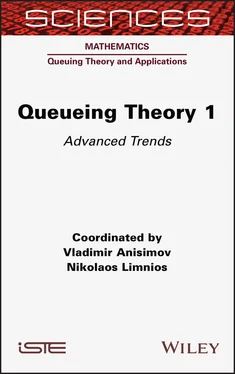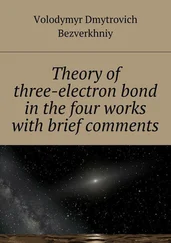138 131
139 132
140 133
141 134
142 135
143 136
144 137
145 138
146 139
147 140
148 141
149 142
150 143
151 144
152 145
153 146
154 147
155 148
156 149
157 150
158 151
159 152
160 153
161 154
162 155
163 156
164 157
165 158
166 159
167 160
168 161
169 162
170 163
171 164
172 165
173 166
174 167
175 168
176 169
177 170
178 171
179 172
180 173
181 174
182 175
183 176
184 177
185 178
186 179
187 180
188 181
189 182
190 183
191 184
192 185
193 186
194 187
195 188
196 189
197 190
198 191
199 192
200 193
201 194
202 195
203 196
204 197
205 198
206 199
207 200
208 201
209 202
210 203
211 204
212 205
213 206
214 207
215 208
216 209
217 210
218 211
219 212
220 213
221 214
222 215
223 216
224 217
225 218
226 219
227 220
228 221
229 222
230 223
231 224
232 225
233 226
234 227
235 228
236 229
237 230
238 231
239 232
240 233
241 234
242 235
243 236
244 237
245 238
246 239
247 240
248 241
249 242
250 243
251 244
252 245
253 246
254 247
255 248
256 249
257 250
258 251
259 252
260 253
261 254
262 255
263 256
264 257
265 258
266 259
267 260
268 261
269 262
270 263
271 264
272 265
273 266
274 267
275 268
276 269
277 270
278 271
279 272
280 273
281 274
282 275
283 276
284 277
285 278
286 279
287 280
288 281
289 282
290 283
291 284
292 285
293 286
294 287
295 288
296 289
297 290
298 291
299 292
300 293
301 294
302 295
303 296
304 297
305 298
306 299
307 300
308 301
309 302
310 303
311 304
312 305
313 306
314 307
315 308
316 309
317 310
318 311
319 312
320 313
321 314
322 315
323 316
324 317
SCIENCES
Mathematics , Field Director – Nikolaos Limnios
Queuing Theory and Applications , Subject Head – Vladimir Anisimov
Queueing Theory 1
Advanced Trends
Coordinated by
Vladimir Anisimov
Nikolaos Limnios

First published 2020 in Great Britain and the United States by ISTE Ltd and John Wiley & Sons, Inc.
Apart from any fair dealing for the purposes of research or private study, or criticism or review, as permitted under the Copyright, Designs and Patents Act 1988, this publication may only be reproduced, stored or transmitted, in any form or by any means, with the prior permission in writing of the publishers, or in the case of reprographic reproduction in accordance with the terms and licenses issued by the CLA. Enquiries concerning reproduction outside these terms should be sent to the publishers at the undermentioned address:
ISTE Ltd
27-37 St George’s Road
London SW19 4EU
UK
www.iste.co.uk
John Wiley & Sons, Inc.
111 River Street
Hoboken, NJ 07030
USA
www.wiley.com
© ISTE Ltd 2020
The rights of Vladimir Anisimov and Nikolaos Limnios to be identified as the author of this work have been asserted by them in accordance with the Copyright, Designs and Patents Act 1988.
Library of Congress Control Number: 2019955378
British Library Cataloguing-in-Publication Data
A CIP record for this book is available from the British Library
ISBN 978-1-78945-001-9
ERC code:
PE1 Mathematics
PE1_21 Application of mathematics in industry and society
Vladimir ANISIMOV 1and Nikolaos LIMNIOS 2
1Amgen Inc., London, United Kingdom
2University of Technology of Compiègne, France
Queueing theory is a huge and very rapidly developing branch of science that originated a long time ago from the pioneering works by Erlang (1909) on the analysis of the models for telephone communication.
Now, it is growing in various directions including a theoretical analysis of queueing models and networks of rather complicated structure using rather sophisticated mathematical models and various types of stochastic processes. It also includes very wide areas of applications: computing and telecommunication networks, traffic engineering, mobile telecommunications, etc.
The aim of this book is to reflect the current state-of-the-art and some contemporary directions of the analysis of queueing models and networks including some applications.
The first volume of the book consists of 10 chapters written by world-known experts in these areas. These chapters cover a large spectrum of theoretical and asymptotic results for various types of queueing models, including different applications.
Chapter 1is devoted to the investigation of some theoretical problems for non-classical queueing models including the analysis of queues with inter-dependent arrival and service times.
Chapter 2deals with the analysis of some characteristics of fluid queues including busy period, congestion analysis and loss probability.
Some contemporary tendencies in the asymptotic analysis of queues are reflected in the following three survey Chapters 3, 7and 10.
Chapter 3includes the results on the average and diffusion approximation of Markov queueing systems and networks with a small series parameter ε including applications to some Markov state-dependent queueing models and some other type of models, in particular, repairman problem, superposition of Markov processes and semi-Markov type queueing systems.
Diffusion and Gaussian limits for multi-channel queueing networks with rather general time-dependent input flow and under heavy traffic conditions including some applications to networks with semi-Markov or renewal type input and Markov service are considered in Chapter 7.
Chapter 10is devoted to the asymptotic analysis of time-varying queues using the large deviations principle for two-time-scale non-homogeneous Markov chains including the analysis of the queue length process and some characterizations of the quality and the efficiency of the system.
The analysis of so-called retrial queueing models is reflected in two Chapters – 4and 8.
In Chapter 4, two models that provide some modifications of “First-Come First- Served” retrial queueing system introduced by Laszlo Lakatos are investigated.
Chapter 8gives a review of recent results on single server finite-source retrial queueing systems with random breakdowns and repairs and collisions of the customers.
The analysis of transient behavior of the infinite-server queueing models with a mixed arrival process and Coxian service times and of the Markov-modulated infinite¬server queue with general service times is considered in Chapter 5.
Chapter 6deals with the applications of fast simulation methods used in queueing theory to solve some high-dimension combinatorial problems in case the other approaches fail.
Читать дальше













